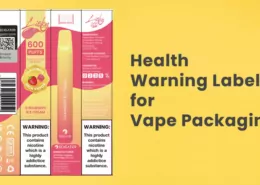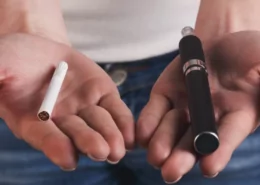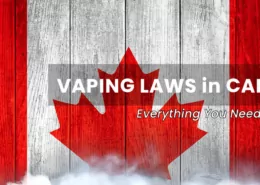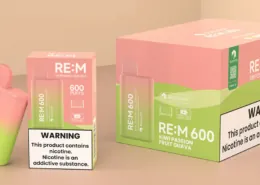Vaping Labels – Deterring Youth While Still Helping Adult Smokers
New vaping label requirements from the FDA aim to strike a balance between deterring youth use and providing enough information for adult smokers.
The updated regulations mandate prominent nicotine addiction warnings aimed at dissuading teenagers and young adults from vaping. At the same time, labels must indicate vaping’s potential harm reduction compared to cigarettes for older smokers.
Discouraging Youth Vaping
Rising vaping rates among adolescents are a major concern. To help curb youth uptake, vape packaging and ads will now feature:
- Addiction warnings – “WARNING: This product contains nicotine. Nicotine is an addictive chemical.”
- Hazard statements – “WARNING: This product contains chemicals known to the State of California to cause cancer and birth defects or other reproductive harm.”
- Safety warnings – “Keep out of reach of children.”
These warnings must be large, clear and on the front of packs. The aim is getting teens’ attention about vaping’s risks before they ever try it.
Read more: VAPE PACKAGING WARNING LABEL REQUIREMENTS IN THE UK AND EU
Still Allowing Harm Reduction Claims
At the same time, vaping has helped some adult smokers transition away from more dangerous cigarettes.
To provide truthful information for older smokers, vape manufacturers can make modified risk claims comparing vapes to cigarettes, with scientific evidence.
Claims must avoid false implications that vapes are safe or FDA-approved quitting aids. But factual statements about reduced toxins and improved health outcomes versus smoking are allowed.
This nuanced approach aims to deter youth uptake while still enabling vaping’s potential as a smoking cessation tool for adults.
Striking the Right Balance is Challenging
Crafting vaping regulations that achieve both goals poses challenges:
- Preventing youth access while not limiting availability for adult smokers
- Warning about risks while providing truthful information on comparisons to cigarettes
- Monitoring all marketing across various media and platforms
Critics argue the rules don’t go far enough. But a well-balanced regulatory approach can address both priorities – protecting teens while helping adult smokers.
Read more: THE HEALTH WARNING LABEL FOR VAPE PRODUCT PACKAGING IN DIFFERENT COUNTRIES
Additional Efforts Needed Beyond Labeling
While labeling is important, other initiatives are still needed to protect kids:
- Age verification for all online and retail sales
- Flavor bans to curb products attracting youth
- School education on vaping hazards
- Advertising restrictions across digital, TV, radio and print
Comprehensive strategies across multiple channels are required to truly curb adolescent vaping trends.
Key Takeaways on New Vaping Labels
- Labels aim to deter youth vaping through strong addiction warnings
- But they also allow factual harm reduction claims to help adult smokers
- Striking the right balance with vaping regulation is challenging
- More initiatives beyond labeling are still required to protect adolescents
The updated requirements attempt to walk a fine line between limiting youth appeal and enabling potential benefits for adult smokers looking to transition from cigarettes. But labeling is just one piece of the puzzle – further action is still required to keep vapes out of teens’ hands.
Source: https://news.cornell.edu/stories/2024/01/vaping-labels-challenge-encouraging-adults-dissuading-kids
- Goldwater Institute Urges Supreme Court to Stop FDA’s Arbitrary Blocking of E-Cigarette Marketing - October 22, 2024
- Vape Market in 2025: Emerging Trends and Predictions Shaping the Industry - October 22, 2024
- South Africa SABS Sets 35% Nicotine Ceiling in New Vaping Products Standard - October 21, 2024









